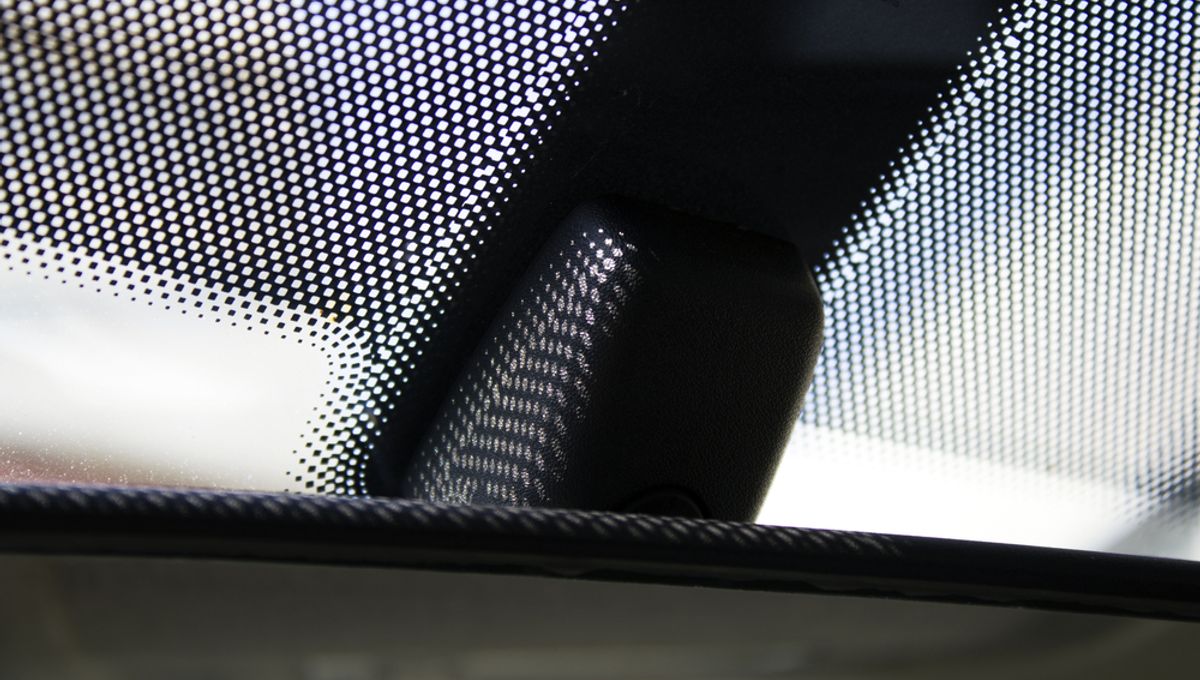
If living in the future has taught us anything, it’s this: that no matter how smart you think you are, you’re always just one well-placed social media post away from having your mind blown by some completely basic life skill or fact that has somehow passed you by.
In the last year alone, for example, we’ve had controversy over where the correct place to store ketchup is; minds blown over how the “I am not a robot” test accounts for sneaky robots; diets overhauled by the discoveries of what goes into allspice, paprika, and parmesan; and, to the horror of elder Millennials everywhere, a need to explain what screensavers were for.
Now it’s the turn of the frit – which, as we’re sure you already know, is the name for one of those little dots around the edge of your car’s windscreen.
Made from baked-on ceramic paint that can’t be removed, these funky spots, plus the big black “frit band” that they coagulate into, serve three main purposes: structure, safety, and aesthetics.
So, first of all, the frit band is vital for simply keeping the windscreen attached to your car. Seems like a tall order for a line of black paint, we know, but it’s actually a pretty clever and multi-use stripe: not only does the rough ceramic paint provide a better, more grippy surface for the urethane sealant connecting the window and the vehicle frame, but it also protects that glue from the ultraviolet light that would otherwise break it down.
“The modern windshield is a marvel of engineering, and dare we say one of the most underappreciated components of a vehicle. Part of that engineering involved how the windshield is bonded to the frame,” explains a blog post from North Carolina-based bodyshop DeDona Tint and Glass.
“While the inward facing side of the frit allows adhesive to bond to the glass, the outward facing side of the frit acts as a shield against UV radiation in order to protect the adhesive bond, which would otherwise be weakened by continual exposure to direct sunlight.”
But that isn’t the only neat piece of science going on. The frits are also a safety feature: the dot matrix, as the pattern of ever-smaller spots dissolving into the center of the panel is known, also helps reduce an optical distortion known as “lensing”.
This effect is actually seen mostly during the creation of the windscreen, one engineer with Pittsburgh Glass Works told Jalopnik. To bend the glass, the window panels are exposed to heat of over 700°C (1,292°F) – and a thick black band around the edge would absorb that thermal energy much faster than transparent glass.
But a sharp heat gradient like that would cause uneven refractive indices across the windscreen – making straight lines look curved or bowed towards the center of the glass. Since driving is easier when you can see properly, the dot matrix is a neat solution to stop this effect from occurring: by allowing a smoother transition from black to transparent, they dissipate the heat more evenly across the screen.
Finally, the frits are there to – well, just to look nice. The band covers up the glue attaching the windscreen to the frame; the dot matrix makes for a more subtle change between the frit band and the screen; and, in more modern cars that may have the so-called “third visor frit”, they can also stop the sun from peeping in between the visors and blinding you on the road.
So, there you have it: the frits. Not just a pointless pattern with a funny name, but an ingenious feat of automotive engineering.
An earlier version of this article was published in November 2023.
Source Link: Exploring The Purpose Of Your Car Windshield's Mysterious Black Dots